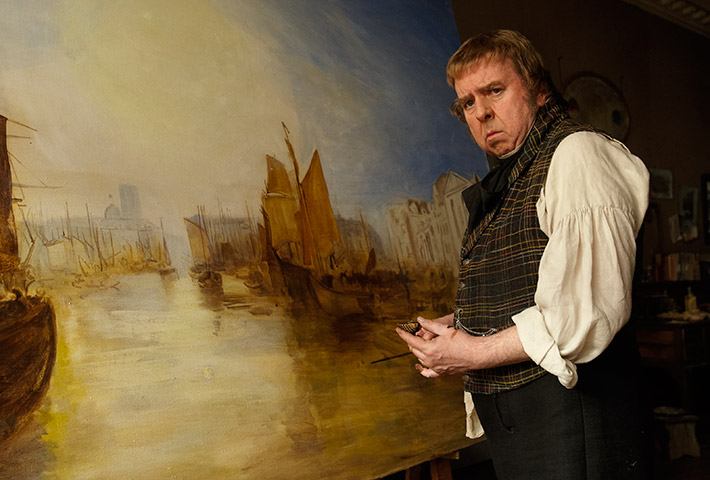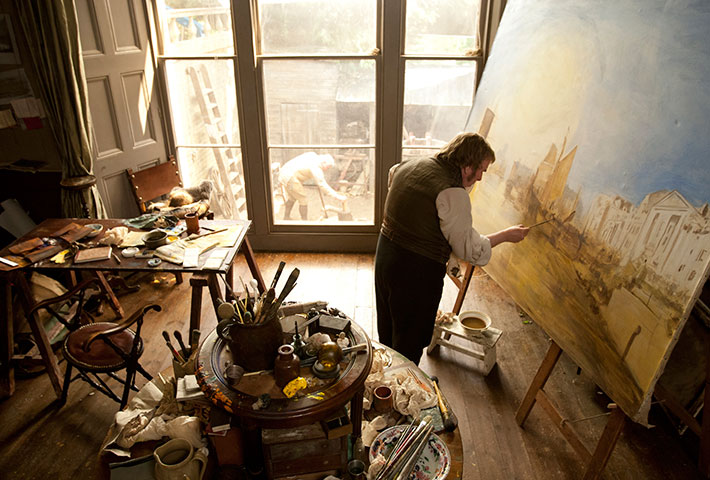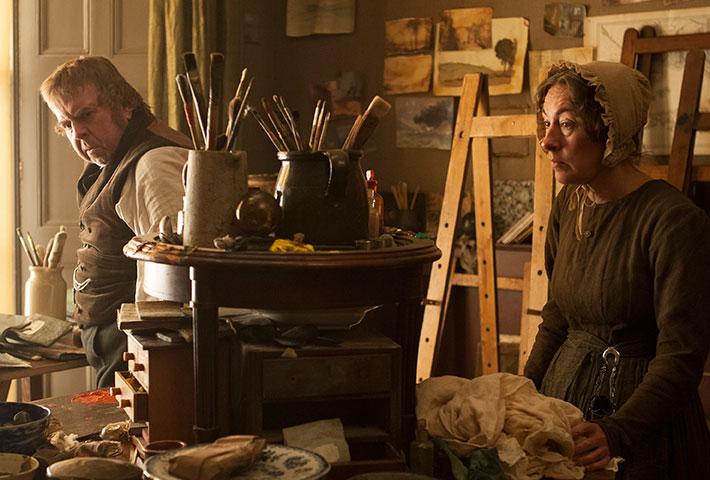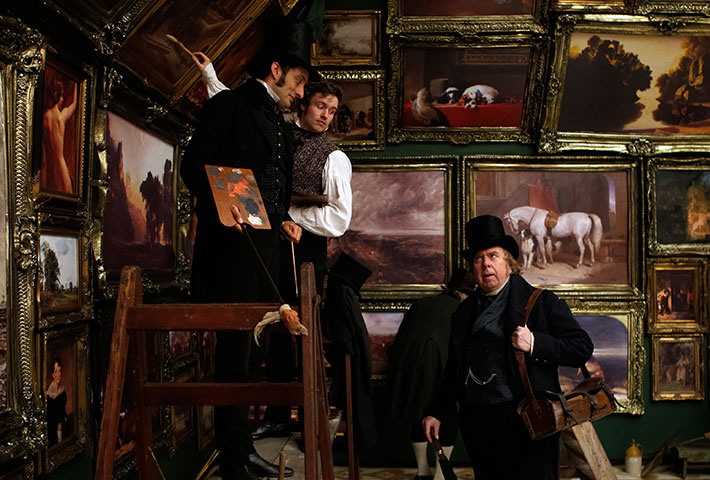Image Above: A Poster from Mr. Turner. (Image from official site)
Mr. Turner traffics in extremes - and there is an abundance of riches at both ends. I will begin with the sublime - as revealed in Dick Pope’s cinematography whose images of landscapes and seascapes are illuminated with the breathtaking light which so inspired and infused the paintings of J.M.W. Turner. The extreme would be Turner, the man - played as a repellent misanthropic, curmudgeonly and single-minded artist who rode roughshod over anyone not directly useful to him. Timothy Spall totally inhabits this unselfconsciously, crude, lewd and gluttonous man with grunts, snorts and the occasional monosyllabic utterance. He treats his devoted housekeeper like a slave including callously having his way with her sexually. He seems to care for no one but his father who is his devoted assistant and possibly only friend. He is generally dismissive or rude to everyone else - including the mother of his children, colleagues, patrons, and members of the Royal Academy.
 Image Above: A still from Mr. Turner. (Image from official site)
Image Above: A still from Mr. Turner. (Image from official site)
The only relief from this relentlessly unappealing warts-and-all portrait comes when he takes up with a widowed landlady with whom he has taken lodgings in the seaside town of Margate, where he goes to make sketches for paintings. Mrs. Booth, initially unaware of his stature, is so open and unintimidated by him that it allows him to soften and allow another human being into his life after the death of his father. They are kind and affectionate with one another until his death. Apart from their clandestine relationship with each other - it is business as usual, and not very pretty.
 Image Above: A still from Mr. Turner. (Image from official site)
Image Above: A still from Mr. Turner. (Image from official site)
 Image Above: A still from Mr. Turner. (Image from official site)
Image Above: A still from Mr. Turner. (Image from official site)
That is all very nice, but not terribly interesting and it all takes a very long time - clocking in at two and a half hours. The death scenes of Turner and his father are both extended sonatas with phlegm. There are snippets of fascinating interactions between Turner and members of the Royal Academy, the critic John Ruskin, and posh collectors which would have been enlightening and more fascinating to expand upon than his stunted personal life. For example, I had to go to Wikipedia to find out what happened to all of the paintings he refused to sell to a private collector because he had bequeathed them to Britain in order that they be kept together.
 Image Above: A still from Mr. Turner. (Image from official site)
Image Above: A still from Mr. Turner. (Image from official site)
 Image Above: A still from Mr. Turner. (Image from official site)
Image Above: A still from Mr. Turner. (Image from official site)
In my view there is an unfortunate imbalance between the man as painter and his private life. He was a prolific genius who turned out an extraordinary body of work of transcendent beauty. His prescient abstract late paintings which render the steam of the modern age with the same reverence which he bestowed upon clouds or mist are way ahead of their time. Extremes are fine. But with so many choices, why not tip the scales toward the sublime?
 Image Above: A still from Mr. Turner. (Image from official site)
Image Above: A still from Mr. Turner. (Image from official site)
Belle McIntyre


